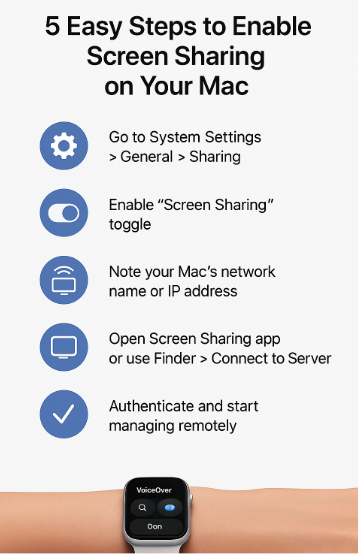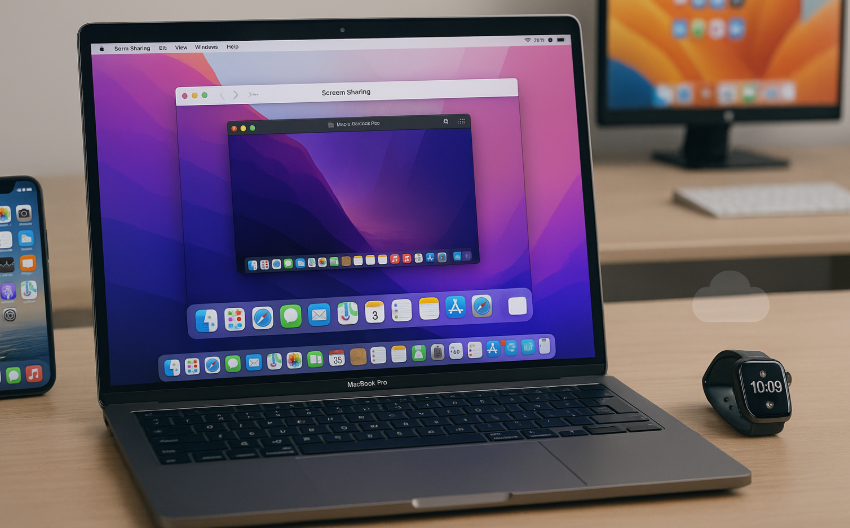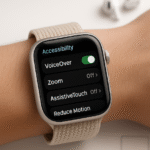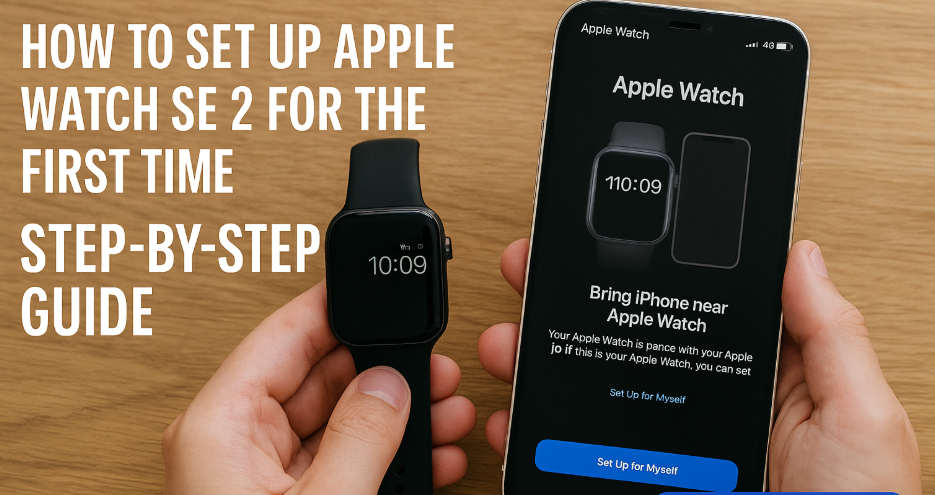As our digital lives become increasingly connected across the Apple ecosystem, the ability to manage devices remotely isn’t just a convenience it’s a necessity. Whether you’re troubleshooting a loved one’s Mac, managing your office Mac mini from home, or overseeing your Apple Watch and iPhone connections, screen sharing in macOS Ventura and beyond offers powerful, secure tools.
But before diving into remote access workflows, it’s crucial to understand how Apple devices play together. Read our Ultimate Apple Watch SE 2nd Gen Review to understand how your Watch ties into the broader Apple ecosystem knowledge that becomes vital when managing devices remotely.
Why Remote Apple Device Management Matters in 2025
In today’s hybrid world, professionals, IT admins, and even everyday users increasingly rely on remote support tools. With macOS Ventura and macOS Sequoia, Apple has made significant improvements in screen sharing, user permissions, and device sync across iCloud.
Use cases range from:
- Troubleshooting a parent’s iPhone without leaving your desk
- Configuring automation scripts on a headless Mac mini
- Monitoring Apple Watch data on a Mac while charging across the room
- Helping team members install updates or apps remotely
Understanding the Security Behind Screen Sharing
Apple builds security into the core of its operating systems. Screen sharing requires explicit permission and leverages encrypted connections over Bonjour or iCloud (if connected remotely).
Key Security Features:
- Two-way authentication
- iCloud-based access via Apple ID
- Built-in firewall permissions
- Optional VNC-style control with encryption for corporate setups
If managing work-from-home setups or BYOD Macs, it’s important to implement proper User Groups and Permissions within macOS System Settings.
Setup Guide: Screen Sharing Between Macs
Step-by-Step Instructions
- Open System Settings > General > Sharing
- Enable Screen Sharing
- Note your Mac’s name and IP address (local or via iCloud)
- On another Mac, open Finder → Go → Connect to Server
- Type in:
vnc://[IP-Address or Hostname] - Enter credentials (must be admin or user with sharing rights)
Pro Tip: Want to help a family member while traveling? Enable Back to My Mac via iCloud or use Apple Remote Desktop for enterprise-grade control.
Managing Non-Mac Devices Remotely
Though you can’t screen-share directly to iPhones or Apple Watches, you can:
- Use Continuity + iCloud to push settings from Mac to iPhone
- Monitor Apple Watch sync via the iPhone interface accessed remotely
- Use AirPlay to Mac for screen mirroring from iPhone or iPad
- Create automation with Shortcuts app triggered from your Mac
This allows indirect but highly effective control over all Apple devices.

Data & Trends
According to MacRumors (2024), more than 62% of Apple users in hybrid work environments used remote Mac control features, a number expected to exceed 75% in 2025 with improvements in iCloud Keychain sync and permissions APIs.
Additionally, Apple’s Remote Management Framework is now supported in more M1+ devices, opening the doors for enterprise-class remote support without third-party tools.
Realistic Use Case: Remote Family Tech Support
“My mom’s MacBook kept showing an iCloud error while I was in a different city. I enabled Screen Sharing through iCloud and resolved the issue in 3 minutes—without walking her through every menu. It’s a game-changer.” Rishika P., Freelance Tech Consultant
Common Scenarios Solved by Mac Screen Sharing
- Corporate IT Helpdesks: Support employees working remotely, push security updates
- Home Networks: Control a media Mac mini connected to your TV
- Parental Supervision: Guide kids through educational apps or troubleshoot iPads via Mac
- Accessibility Use Cases: Assist users with limited mobility using remote device controls
- Travel Scenarios: Maintain access to key files or hardware back at home
Troubleshooting Screen Sharing Problems
Can’t Connect to Remote Mac?
- Ensure both devices are on same Apple ID (or share access via iCloud)
- Firewall blocking port 5900? Allow VNC or Screen Sharing
- Update macOS to latest version for compatibility
- Check router settings if connecting over internet
Practical Tips for Smooth Remote Control
- Use Trackpad mode for smoother navigation
- Enable File Sharing alongside screen sharing for seamless file drops
- Keep iCloud Drive enabled on all devices for synchronized workspaces
- Use Universal Clipboard between Mac and iOS for copy-paste across devices
Expert Insight
“Apple’s screen sharing tools have matured tremendously. With iCloud integration, it’s now one of the most secure, latency-free ways to manage Macs remotely,” says Marc Elden, macOS Systems Engineer at a Fortune 500 tech firm. “When paired with the ecosystem’s other tools, it becomes a full productivity suite.”
In-Depth FAQs
Q1: Can I use Mac screen sharing outside my home network?
Yes. If both Macs are signed in with the same Apple ID and have iCloud configured properly, remote access works via Apple’s secure relay system.
Q2: Is screen sharing safe for corporate use?
Yes, when implemented with Apple Business Manager or MDM tools. Encryption and session logging ensure enterprise-grade security.
Q3: Can I screen share with an iPad?
Not directly, but you can AirPlay your iPad to a Mac and control media/apps that way.
Q4: Can I record a screen share session?
Absolutely. Use QuickTime Player to record the screen session for training or documentation.
Final Thoughts
Mastering Mac screen sharing is more than a cool trick it’s a pathway to true remote productivity. Whether helping someone fix a device, accessing a secondary Mac while traveling, or managing your Apple ecosystem from a single interface, the tools in macOS Ventura and Sequoia are more powerful than ever.
Keep Exploring the Ecosystem:
- Optimizing Apple Watch SE 2 for Running Marathons – Complete 2025 Guide
- Top Health Monitoring Apps Compatible with Apple Watch SE 2 – 2025 Edition
- Troubleshooting Bluetooth Connectivity on Apple Watch SE 2 – 2025 Guide
- How to Use Apple Watch SE 2 as a Remote for Your Apple TV – Complete 2025 Setup Guide
- How to Use Apple Watch SE 2 to Improve Your Posture – 2025 Guide with Real-Life Use Cases







